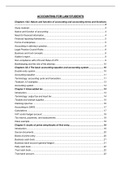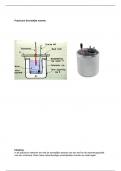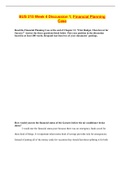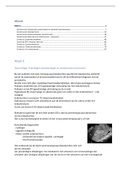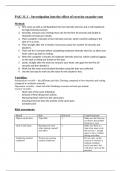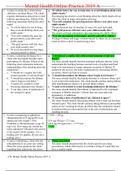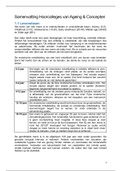Managing in the vineyard
Number of factors that must be combined to get a good basic product:
- Good soil for the right variety of grape
- A good climate and micro climate
- A wine-grower with passion and expertise
Climate & weather
Wine growing is possible between the 30th and 50th degree of latitude.
Ideal weather condition:
Winter -> light to moderate frost
Spring -> Rainy without frost
Summer -> warm not too hot with occasional rain
2 months prior harvest -> a lot of sun with as little rain as possible
Temperature:
10 degrees till 25 degrees. The best temperature is 20-22 degrees Celsius.
1500 hours of sunlight are needed to grow the grapes.
Per growing season 700mm of rainfall is needed for the grapes to grow
The best soil to grow the grapes:
When the soil is shallow and has a limited water reserve then this contributes to qualitatively better
grapes and potentially better wine. This is because the roots have to work hard to get the nutrients and
minerals, the harder the plant has to work the better the quality. The types of soil used in growing wine
are often poor and therefore not very fertile.
The vine
Vitis vinifera = vine
The vine needs nutrients from the soil and the air.
Nutrients from the soil -> consists of water and minerals
Methods of wine growing:
Intensive methods -> growing wine as fast and as cheaply as possible, using chemicals.
Integrated viniculture -> observe the vineyard to save the environment. Organically grown (hand off
approach is used).
Biodynamic -> the theory divides nature into four elements. Earth - the root system
Water – the leaf, Air – the flower, Fire/heat – the grape. Takes in account the sun, moon and stars in
relation to the location of the vineyard. Uses homeopathic substances.
Pruning & training
Takes time during the resting period of the plant, canopy management. Pruning reduces the yield %
but increases the quality.
,Guyot method:
a short and long piece is left after pruning. Double (image) or single.
Cordon pruning method:
Makes it possible for the vines to be at a large distance, bunches and leaves are well separated
to avoid fungal diseases.
Bush vine or gobelet method:
Free standing vine, shoots are all pruned back to about 2 buds.
Pest and diseases
Insects and other pests:
- Phylloxera Vastatrix.
- Birds (nets put over the grapes can stop birds from eating them).
Fungal diseases:
- Mildew, oidium and peronospera (can be combated (bestreden) with sulphur)
- Rot, Botrytis cinerea can cause (bad) grey rot & (good) noble rot. Too much humidity
causes grey rot.
- Pierce’s disease, a bacterium, taking out the vine is the only remedy.
Harvesting
By using a refractometer, the sugar content can be measured every day, once this is fairly
consistent it’s time to harvest. Harvesting by hand takes longer and more labour but will give
a better grape selection. Mechanical harvesting is more time efficient but cannot be used on a
steep slope.
,Chapter 2
Managing the wine cellar
The grape
Stalks -> tannin
Seeds -> bitter oils
Skin -> colour, tannin & flavour.
Pulp -> water, sugar, acids & flavourings.
Yeast -> micro-organism on the surface of the skin.
Stalks
The stalks will be removed before the wine making because of the harsh tannin flavour.
Seeds
The seeds are very bitter so the grape will be gentle crushed to avoid getting tannin oil in the grape
juice.
Skin
If the skin is soaked during fermentation the wine will be red. If the skins are only soaked briefly the
wine will be rosé. The longer the skins ferment the more bitter the wine will be. The higher the
amount of tannin, the more bitter and longer well kept the wine will be.
Pulp
The pulp is transparent. White wine is made from only the pulp. The pulp consists mostly of water,
sugar, acids, minerals and proteins. Each 16,5 grams of sugar per liter of juice will produce 1% of
alcohol. The level of acidity of a grape varies between 4.5 & 8 grams per liter. The is not always
enough sugar in the grapes to get sufficient alcohol, is this case sugar will be added-> Chaptalisation.
If the grape lacks acidity, acidity can be added. If it contains too much acidity potassium bicarbonate
will be added. Tannin powder can be added if the wine contains too little tannin.
Yeast
Yeast can be found on the skin of the grapes and is essential for the fermentation process. To make
sure the process will start cultivated yeast will be added to the grape juice.
White wine production:
After being harvested the grapes are crushed. This is done to extract the juice out of the grapes when
pressing them. The skins can be soaked with the juice at a temperature of 4degrees Celsius -> skin
contact. This adds extra aroma’s.
Alcohol fermentation:
Yeast + sugar -> alcohol + carbon dioxide gas (co2 ) + warmth
Alcoholic fermentation takes place between 14 to 20 degrees. The process takes 2 to 3 weeks.
Most white wines do not undergo malolactic fermentation.
Malolactic fermentation = malic acid -> lactic acid
This is the conversation of the sour malic acid into the gentler lactic acid.
White wine:
Harvesting -> crushing -> pressing -> alcoholic fermentation -> filtering -> maturation -> bottling
Red wine:
Harvesting -> destalking/crushing -> alcoholic fermentation with skins and pips -> malolactic
fermentation -> pressing -> maturation & filtration -> bottling
Methods red wine production:
, -Traditional method
Harvesting -> destalking -> crushing -> alcoholic fermentation (20-32 degrees) -> malolactic
fermentation -> pressing -> ageing -> filtration -> bottling
First 85 & of the wine -> Vin de Goutte
15% of the wine pressed from skins -> Vin de Presse
-Carbonic maceration
Whole bunches of grapes in closed system + CO2 -> intercellular fermentation (little bit of alcohol is
formed+ extra strong aroma’s) -> pressing -> alcoholic fermentation -> malolactic fermentation ->
ageing -> filtration -> bottling
-Thermo vinification
Grapes are heated briefly to 70 degrees Celsius. The colour of the skins will release quicker this way
and gives a supple character. Aroma may resemble stewed fruit, somewhat soupy character.
Rosé:
-Short maceration time
After the red grapes are crushed the skins and the juice are fermented together for a short time, after
this the skins are taken out and the fermentation continues. Rose production is only possible with red
grapes.
-White wine process using red grapes
Called a Vin Gris. If the red grapes are pressed, the white juice will assume a light pink colour.
Example. Rose D’Anjou (Loire)
-Saignée method
The red grapes are destalked and soaked with the skins in the juice for 12 to 24 hours to get the colour.
After this the skins will be taken out and the juice fermented.
Sparkling wine:
-Traditional method
1. Production of the basic wine (With high acidic content)
2. Blending (assemblage) the basic wines of various types of grapes, various vineyards and various
years are mixed to get a harmonious whole.
3. Second fermentation in the bottle & yeast autolysis. The wine is bottled and to each bottle a little bit
of yeast and sugar is added (Liquer de Tirage) The bottles are closed off with a crown cap and put
away horizontally. After the fermentation process in the bottle the yeast dies and will form a thin layer
of sediment in the bottle.
4. Riddling (remuage-> the periodic turning or shaking of bottled wine, to move sediment towards the
cork). At this stage the dead yeast cells are removed from the bottle. The bottle will be turned every
few days. (Pupîtere -> wooden rack to put the bottles in or Gyropalletes -> iron crates that fit 504
bottles.)
5. Disgorgement (taking sediment out of the bottle) and determine type of taste (dosage). To remove
the dead yeast cells the neck of the bottle is frozen by a solution of salt. The crown cap is removed and
the yeast will shoot out because of the CO2. Then Liqueur d’Expedition is added, a mixture of cane
sugar solution and wine.
Brut nature Bone dry 0-2gr sugar/liter
Extra brut Very dry 0-6gr sugar/liter
Brut Dry-dry 0-15gr sugar/liter
Extra sec Off dry 12-30g sugar/liter
Sec Medium dry 17-35gr sugar/liter
Demi sec Medium sweet 33-50gr sugar/liter


